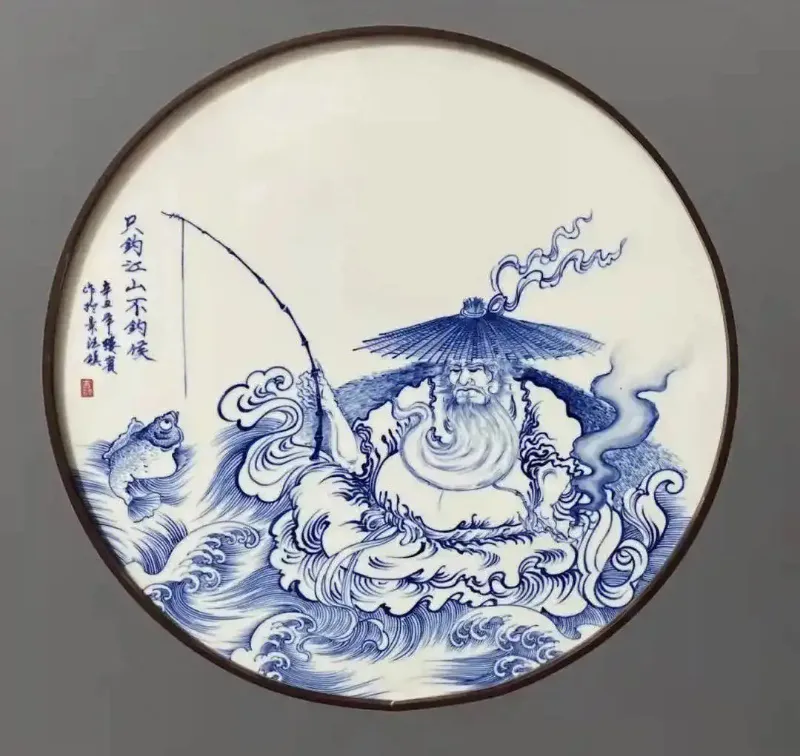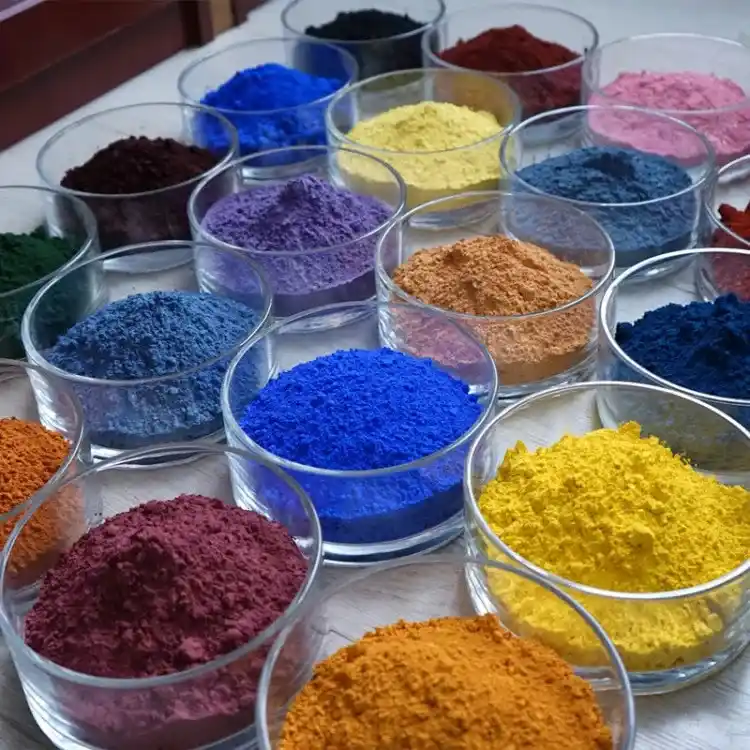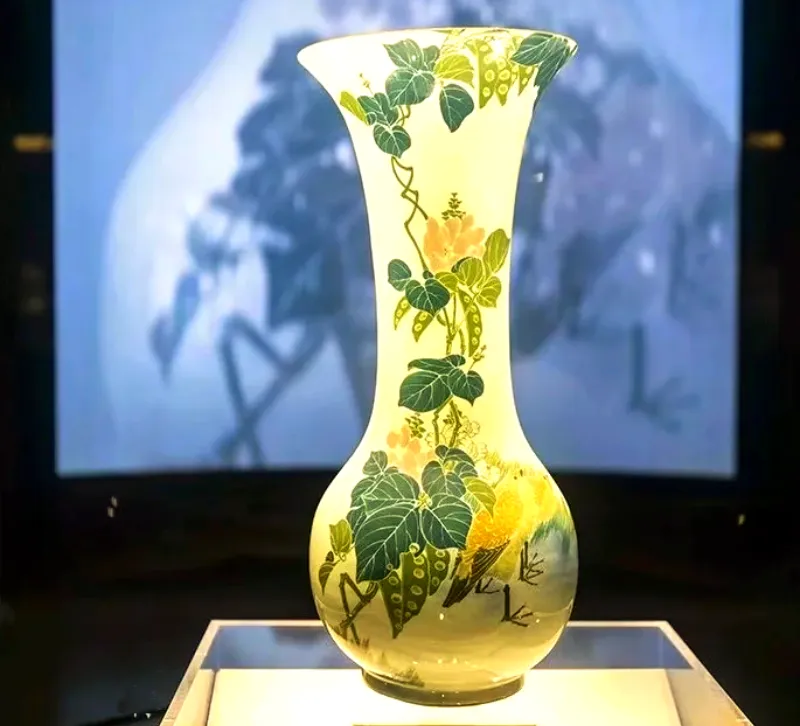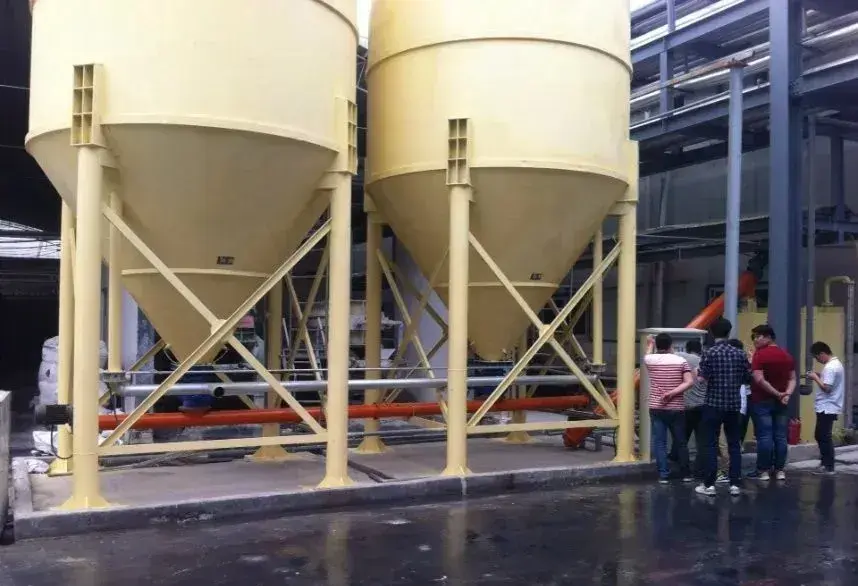Ceramic pigments are functional materials used for ceramic decoration, requiring properties such as high-temperature resistance, strong chemical stability, vivid colors, and good adhesion to ceramic substrates (bodies or glazes). Their preparation involves key steps like raw material selection, chemical reaction control, and particle refinement, combining traditional methods with modern technologies to ensure stable performance.

types of ceramic pigments
Ceramic pigments include overglaze, underglaze, glaze, and body coloring pigments.
Underglaze pigments
It needs to be calcined at high temperature (above 1300℃) and requires high stability.
There are fewer varieties of underglaze pigments. The earliest ones used were blue and white and underglaze red. In recent years, red, yellow, blue, green, black, gray, brown, etc. have been made.
Overglaze pigments
It only needs to be calcined at a temperature of 600~800℃, so there are many varieties and rich colors.
As overglaze decoration, there are also liquid pigments. For example: Jinshui is made by combining metal and organic matter to synthesize sulfurized ointment, and then adding organic solvents.
In-glaze pigments
Also known as “high-temperature fast-firing pigments”, the color firing temperature is 1100~1260℃, the color firing time is 35~120 minutes, and the color tone is richer.

TECHNICAL REQUIREMENTS FOR CERAMIC PIGMENTS
The color of the powder is basically consistent with the standard sample. The moisture content of the powder should not be greater than 0.4%.
The pH of the powder is not greater than 8.0 for flat printing pigments; not greater than 9.0 for screen printing pigments.
For flat printing pigments, the particle size should be no less than 95% of the particles with a diameter less than 15um. The largest particle is less than 30um. For screen printing pigments and in-glaze pigments, the particle size should be no less than 90% of the particles with a diameter less than 15μum. The largest particle is less than 30um. For pastel pigments, the largest particle diameter is less than 840um. For underglaze pigments, the particle size should be no less than 92% of the particles with a diameter less than 15μm. The largest particle is less than 30um. Among them, the particle size of manganese red with a diameter less than 15μm should be no less than 82%, and the largest particle is less than 35μum.
The hue and color of the pigment should be basically consistent with the standard sample.
The lead and cadmium dissolution of the on-glaze and in-glaze pigments should meet the requirements of Table 1-5.
FUNCTION AND APPLICATION OF CERAMIC PIGMENTS
Function
Coloring of the body:
Mix the colorant and the body to make the body present a certain color after firing.
Coloring of glaze:
Use colorants and basic glazes to mix various colored glazes and artistic glazes.
Drawing patterns:
It is widely used on the surface and under the glaze of the glaze layer for hand-painting. It can also be used as decals, screen printing, etc.
Application areas

Used in ceramics, colored glazes, underglaze colors, enamels, enamel decals, architectural enamel panels, permanent color standards and far-infrared materials, etc. Heat-resistant coatings, fluorocarbon coatings, outdoor high-weather-resistant coatings. Outdoor plastic products, plastic steel door and window profiles, masterbatches, etc.
Ceramic pigment preparation method
Mixing
The final hue of the coloring agent is influenced by other components added. To ensure consistent tones, raw materials must be carefully weighed and mixed according to their composition. The best method is wet grinding, drying, and sieving. Other methods include dry methods, where raw materials pass through a 60-mesh sieve or are mixed in a dry mixer. The method depends on the type of colorant.
Calcination
Calcination is an important step for stabilizing the mixture. The calcination temperature must match the final use temperature of the product. During calcination, reactions such as decomposition and combination occur.
Decomposition: Many raw materials release gases upon heating. Incomplete decomposition causes gas release, leading to bubbles, cracking, or white spots on painted areas. This causes color to shift to colorless areas.
② Combination: The coloring compounds form by combining raw materials during calcination. These compounds become inactive and participate in the melting process of the body and glaze. Spinel-type colorants are often formed this way. When mixing multiple coloring agents, like black colorants, complete calcination is critical. Incomplete reactions cause separation in the glaze, leading to color mixing on decorations.
In the past, calcination was done in sealed crucibles in bisque or glaze kilns. For fine colorants, multiple water-cooled muffle kilns are better for calcination.
Water Washing
After calcination, crush the colorant and wash with water to remove soluble substances. Chromate-containing colorants need hot water for washing. If not cleaned thoroughly, residual chromates cause uneven color in chromium areas.
Grinding

After washing, the colorant is wet-ground in a ball mill to the required fineness. The colorant must pass through a 300-mesh sieve. Insufficient grinding causes uneven particle size, making the colorant difficult to use or lacking opacity. This results in a spotty appearance after firing. Excessive grinding, with dust-like particles, prevents full fusion with the glaze, leading to rolling glaze defects.
epic powder
In conclusion, the preparation and application of ceramic pigments require precise control over every step, from raw material selection to final grinding. At Epic Powder, our advanced powder processing equipment, such as ball mills and air classifiers, ensures that ceramic pigments are refined to the perfect particle size and consistency. By combining cutting-edge technology with years of expertise, we help deliver high-quality pigments that meet the stringent requirements for color stability, high-temperature resistance, and application performance. Whether for industrial or artistic ceramics, Epic Powder’s solutions guarantee reliable and efficient pigment production.

